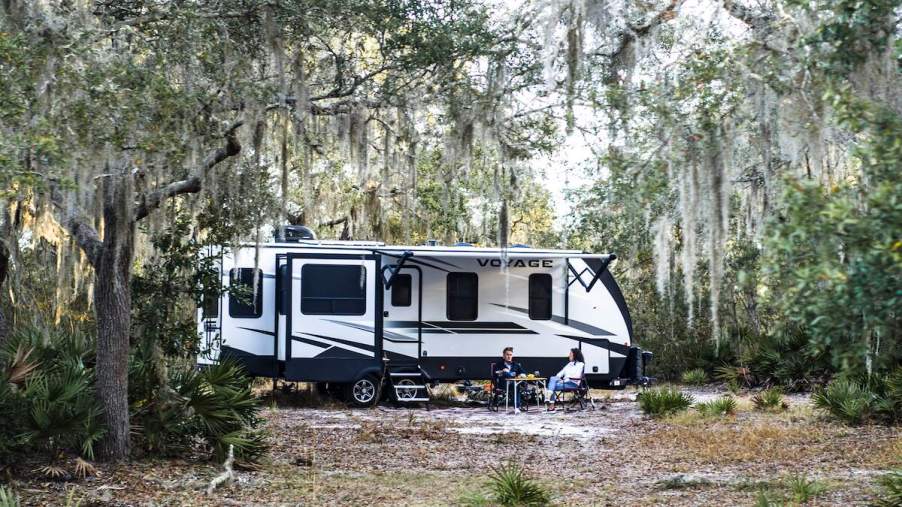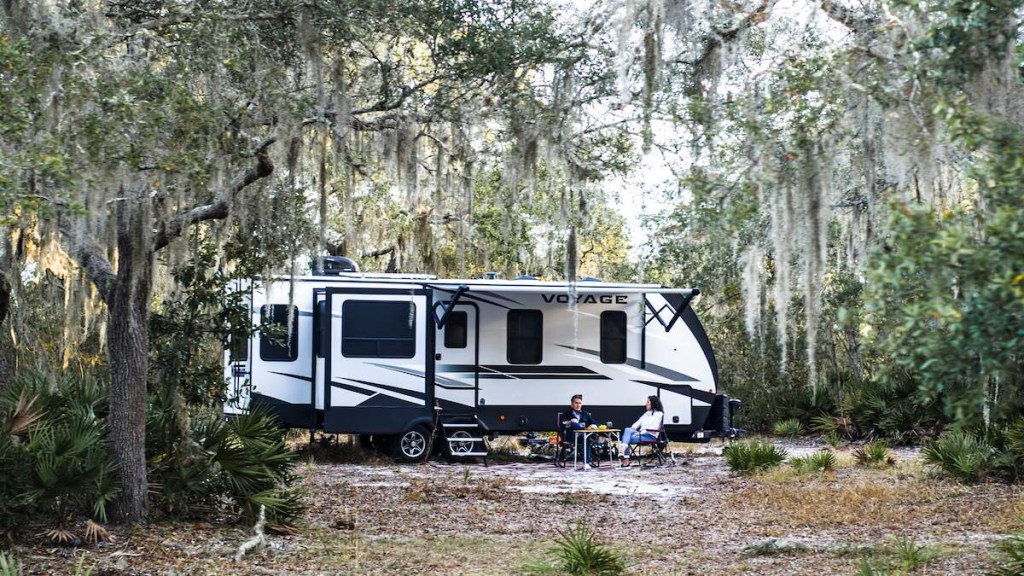
Towable RVs vs. Motorhomes: What Are the Advantages and Disadvantages?
During the pandemic, the RV industry experienced record sales as Americans took to the roads and campgrounds to avoid air travel and confined spaces. Thanks to that unprecedented growth, more recreational vehicles cruised highways and byways than ever. Motorhomes and campers come in many sizes, shapes, styles, and price points. Here are the advantages and disadvantages of towable RVs and motorhomes.
5 advantages towable RVs have over motorhomes

There is no one-size-fits-all when it comes to RVs. The type of camper a consumer chooses depends on several factors, such as how many people will travel together, how often the vehicle will be used, and whether it will be used for extended vacations or short weekend trips. Budget is another consideration that cannot be overlooked.
Consider the following advantages towable RVs have over motorhomes:
- Size matters: Towable RVs comprise a wide range of vehicles, such as small teardrop trailers, pop-up campers, hybrids, travel trailers, toy haulers, and fifth wheels. Each offers different features and can sleep anywhere from two to 12 occupants. Motorhomes are available in Class A, B, and C models but usually provide less living space than trailers.
- Storage space: A toy hauler or larger fifth-wheel offers cavernous storage space for outdoor toys such as kayaks and camping gear. A motorhome typically has limited cargo-carrying capacity, making it harder to pack extra personal belongings on extended trips.
- Residential appliances: Many of today’s RVs have residential features such as full-size refrigerators, fireplaces, washers/dryers, and even dishwashers. These large appliances are often available in towable RVs and motorhomes but typically come with more bells and whistles in a camper.
- Home on wheels: Toy haulers have expanded garage areas that can be converted into an office, bedroom, or additional living space, creating a more comfortable environment. Motorhomes are limited in providing enough room to spread out and are better served for offering a comfy ride when traveling.
- You don’t need to pull the plug: Once you set up a towable RV in a campground, you can disconnect your truck or SUV to explore the area and get around town. But with motorhomes, unless you tow a vehicle, you must unplug the water, sewer, and electric connections before leaving the campground, making it more of a hassle to make a quick run to the grocery store.
5 advantages motorhomes have over towable RVs
Although towable RVs offer many advantages over motorhomes, there are also some disadvantages to consider before deciding which type of rig to choose:
- Towing capabilities: Though larger RVs offer more space, they tend to be heavier, requiring a heavy-duty truck to manage the towing requirements. The added cost of the tow vehicle adds to the overall expense and can sometimes end up costing more than a motorhome.
- Setup time: Motorhome drivers can quickly set up when arriving at a campsite, pulling into a spot for the night with minimal effort. However, towable RVs require more time to back up, unhitch, level, get the slides out, and hook up to connections.
- Power source: Most motorhomes have an onboard generator to supply backup electricity when the rig is disconnected from a power source. Towable RVs usually do not have a generator, so people wanting to camp off the grid must consider an aftermarket unit.
- Ease of driving: Towing an RV can be more difficult than driving a motorhome, especially when it’s windy or raining. Some drivers prefer a fifth-wheel setup because towables are infamous for swaying. The wind resistance will also lower the rig’s gas mileage, especially when packed to capacity.
- Adding a towable toy: When towing an RV, it’s impossible to trailer a boat or other towable toy. But with a motorhome, hitching a watercraft for more outdoor adventures is easy.
Which RV type is more popular?
According to the RV Industry Association (RVIA), approximately 100,000 RV shipments occurred in 1980. RV sales gradually ebbed and flowed over the years until they drastically dropped in 2008, when the economy took a dive. But the market recovered and steadily grew, reaching a record 600,000 shipments in 2021 following the pandemic.
In 1980, less than 30% of RV sales were motorhomes; towables accounted for 70% of the market share. Around 1984, motorhome sales peaked, earning 40% of the market. Today, motorhomes account for less than 10% of recreational vehicle shipments, with 90% associated with towable RVs. So when it comes to towable RVs versus motorhomes, most American consumers prefer trailers.


